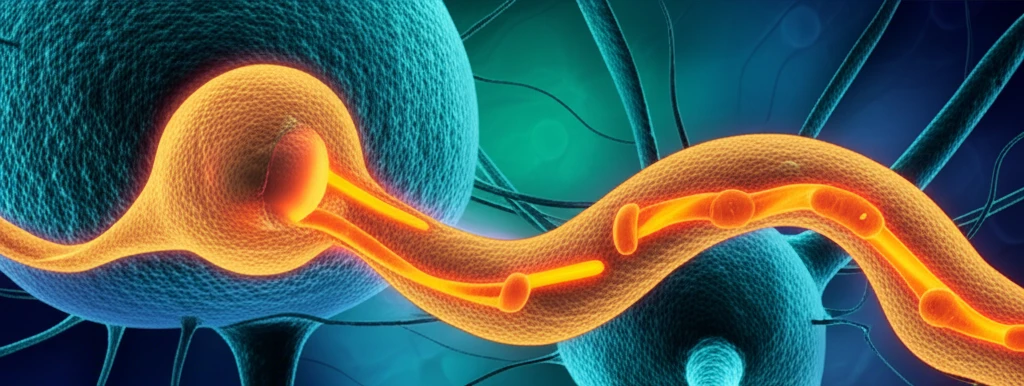
Glioblastoma Breakthrough: How Targeting This Channel Could Stop Cancer Spread
"Scientists discover a new way prostaglandin E2 (PGE2) fuels glioblastoma by activating the TRPM7 channel, paving the way for targeted therapies."
Glioblastoma, an aggressive brain tumor, has long been a formidable challenge. Recent research highlights the important roles of prostaglandin E2 (PGE2) and transient receptor potential melastatin 7 (TRPM7) in glioblastoma cell migration and proliferation, suggesting they could be key targets for new treatments.
Prostaglandin E2 (PGE2), a lipid mediator produced in the body, plays a role in various physiological functions, including cell proliferation and cancer progression. It works by activating specific G-protein-coupled receptors (GPCRs) like EP1, EP2, EP3, and EP4.
Transient receptor potential melastatin 7 (TRPM7) is a cation channel involved in cellular processes. Given the connection between PGE2 and GPCRs, scientists hypothesized a relationship between PGE2 and TRPM7 in glioblastoma, and its effects on proliferation and migration.
Unlocking the Connection: PGE2 and TRPM7's Role in Glioblastoma

To investigate the link between PGE2 and TRPM7, researchers conducted experiments on HEK293 cells and human glioblastoma A172 cells. They found that PGE2 increased TRPM7 currents, suggesting a direct activation of the channel.
- PGE2 Boosts TRPM7 Currents: PGE2 significantly ramps up TRPM7 activity in both HEK293 and A172 cells.
- EP3 Receptors are Key: This receptor type is the specific link in the chain, mediating PGE2's effects on TRPM7.
- PKA Activity Plays a Role: PGE2 appears to dial down PKA activity, which in turn modulates TRPM7 channel behavior.
Targeting TRPM7: A Promising Strategy for Glioblastoma Treatment
This research sheds light on the intricate relationship between PGE2 and TRPM7 in glioblastoma, suggesting that TRPM7 could be a promising therapeutic target. By understanding how PGE2 activates TRPM7, scientists can develop treatments to disrupt this pathway and potentially halt the spread of glioblastoma cells.
Targeting TRPM7 could involve developing specific inhibitors that block the channel's activity, or finding ways to modulate the EP3/PKA signaling pathway to reduce TRPM7 activation. These strategies could help slow down tumor growth, prevent metastasis, and improve outcomes for patients with glioblastoma.
While further research is needed to fully understand the implications of these findings, this study provides a foundation for developing new therapies that target the PGE2/TRPM7 pathway in glioblastoma, offering hope for more effective treatments in the future.
